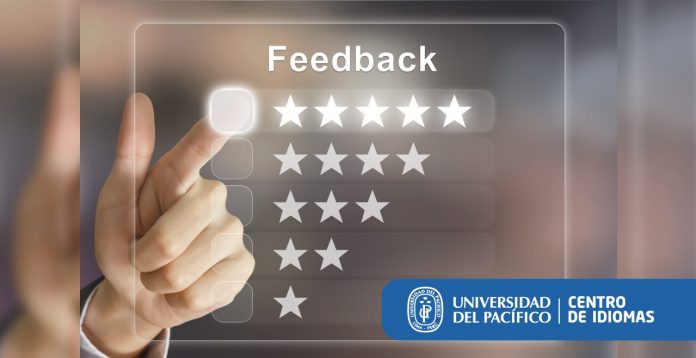As mentioned in the introduction to our current series of articles, one of the biggest challenges faced by teachers working in online education is how to provide feedback, especially when teaching large groups. Here we will share three aspects that could contribute to more successful experiences when guiding your students’ work.
AUDIO AND VIDEO FEEDBACK
We certainly speak faster than we write, but teachers may not be used to recording themselves because they are either self-conscious or afraid that the result may be too long.
A two-minute audio recording giving feedback can be a lot more useful for students if it goes beyond language errors (grammar, lexis or pronunciation), and also addresses content (topic development, task achievement). Tools like Vocaroo or Kaizena may prove very useful for this purpose.
Video is an interesting alternative for feedback on students’ written production. It is not limited to teachers recording themselves, but also registering the contents of the screen as a piece of work is being corrected (which could be done with the help of tools such as Screencast-o-matic or Screencastify). As with audio feedback, teachers can go beyond correcting language errors and focus on other areas that are just as important.
Both types of feedback can be used to provide comments on issues specific to each class. For instance, after project presentations, teachers can record a video focusing on essential aspects that the students will have to work on. This video can be viewed many times so students won’t miss out on anything.
SELF-ASSESSMENT FORMS
Another useful technique when giving feedback to large classes is enhancing students’ self-assessment skills. When students are able to identify what, how and why they learned something, they will definitely become more aware of their own progress. The greater benefit is that students may become more autonomous, so teachers’ comments and suggestions will complement what the students have already identified. One suggestion for this type of feedback is to design the respective instrument in a way that students need to write things down instead of ticking boxes, for example. LITTLE BUT OFTEN
LITTLE BUT OFTEN
One important principle to remember is that no activity should be left without feedback. Instead, the principle of “little but often” should prevail; using either audio or video might cut time considerably and make feedback frequent and accessible for students. Another important principle is the moment when feedback takes place: if it is given at the end of a process, it will not give students the chance to improve their performance from the moment their course begins.
As we can see, individual written feedback is not the only option, especially when we work with large classes. If we keep thinking that we can transfer all techniques used in face-to-face lessons to the virtual world, we will be causing our students to miss the opportunities given by the real world.
What do you think? Do you teach large classes online? How do you give them feedback?










